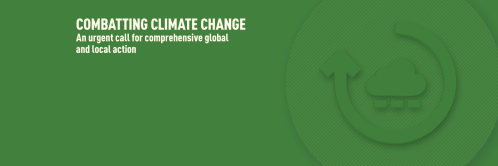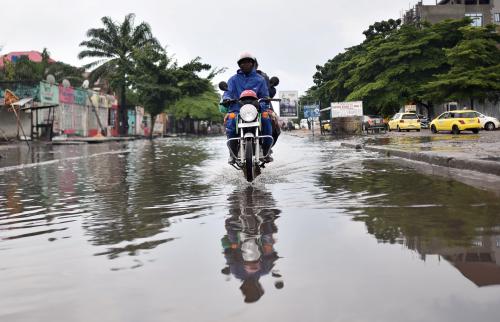An earlier version of this blog incorrectly stated that the frequency of droughts in sub-Saharan Africa almost tripled between 2010 and 2019. The blog has been updated to state that relative to 1970-79, the frequency of droughts in sub-Saharan Africa nearly tripled by 2010-19.
On October 6, the World Bank Group released the October edition of its Africa’s Pulse report, its biannual macroeconomic analysis for sub-Saharan Africa. This edition of the report focuses on climate change adaptation and its impact on economic transformation in sub-Saharan Africa as well as highlights the devastation caused by related deaths across the region.
Notably, write the authors, while the world’s mean surface temperature continues to rise, Africa’s has risen at an even faster pace. Indeed, the year 2020 was the fourth-warmest year for the African continent since the year 1910. The rises in temperature and changes in rainfall patterns have led to the increase in frequency and intensity of extreme weather events across the continent. In fact, natural disasters (including drought) have increased at a much faster pace than in the rest of the world. The report states: “Relative to 1970-79, the frequency of droughts in sub-Saharan Africa nearly tripled by 2010-19, it has more than quadrupled for storms, and it has increased more than tenfold in the case of floods.” Figure 1 shows the types of natural disasters affecting countries across Africa.
Figure 1. Natural disasters affecting the most people across sub-Saharan African countries, 2000-19
 Source: World Bank Group, Africa’s Pulse, October 2021 Edition.
Source: World Bank Group, Africa’s Pulse, October 2021 Edition.
Figure 1 reveals that, overall, of climate-related natural disasters, droughts have affected the most people—and primarily those living in the Horn, Sahel, and southern regions on the continent.
After drought, flooding incidents affect the most people across the continent, though they are concentrated in a few countries: Indeed, collectively, Kenya, South Africa, and Mozambique experienced 75 percent of the region’s floods and storms, though notably, Kenya and South Africa individually were most affected by drought.
Tragically, Somalia, according to the report, experienced the highest death toll from natural disasters, due to its 2010 drought. Mozambique had the second-highest death toll, largely caused by Cyclone Idai that took place in 2019.
Though their warnings were dire, the authors offered many solutions for mitigating and combating climate change—importantly stating that fiscal instruments can be the most effective when it comes to addressing climate change. Changes in temperature and rainfall can affect economic activity especially in sectors like agriculture, fishing, and tourism, which are severely sensitive to climate shocks. Aside from disrupting economic activity, they can also heighten volatility of government revenues. The report suggests that fiscal instruments in sub-Saharan Africa, such as environmental tax reform and subsequent revenues, can finance climate change adaptation and mitigation policies, alleviate the social impact of climate risks, and speed up the transition toward resilient infrastructure and technologies. While critics often proffer that environmental tax reforms have an adverse impact on low-income households, the report argues that social protection programs should step in and provide measures such as housing, public spending on health care services, and education.
For more on climate in Africa see, ”Africa can play a leading role in the fight against climate change” and “Climate adaptation and the great reset for Africa.”






Commentary
Increasing droughts and floods on the African continent
October 8, 2021